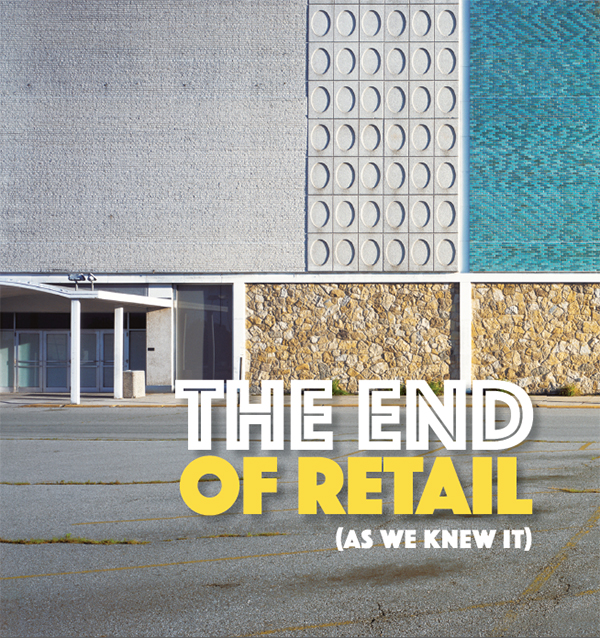by Hal Conick, American Marketing Association (excerpt)
The rise of mobile devices has ensured retail will never be the same. Companies must deliver a new customer experience or risk falling into the retail chasm.
The Mobile Revolution
There’s a “modern commerce revolution” in retail, according to Brian Solis, a principal analyst at Altimeter and author of X: The Experience When Business Meets Design. Consumers are empowered by the flexibility of smartphones and have either subconsciously or intentionally changed how they behave, what they value and how they make shopping decisions. “That’s where all of this disruption is stemming from,” Solis says.
“There is a need to create a bridge between the digital and real world so that they blur and essentially coalesce with one another, but that takes experience, design and architecture, and to get there we have to understand customer modeling,” Solis says. “We have to understand how their favorite apps are impacting how they interact with information and then use that to redesign online experiences to be more like the Ubers and Tinders of their world.”
Physical retailers should strive for digital parity, says Micah Solomon, a customer experience speaker and consultant. Transparency and ease of use have become essential retail qualities for many customers. Opaque businesses with wonky mobile experiences will risk making customers feel inconvenienced—not a driver of repeat business. “Having said that, streamlining isn’t everything,” Solomon says. “The customer experience—the reason people shop—is about entertainment and emotional engagement. You can’t streamline yourself into a successful business in physical retail unless you’re a convenience store at the perfect location. You need to offer something more.”
The Unknown, Changing Customer
“There’s very little expertise and experience within the executive ranks of these retailers because they’re still trying to compete against Amazon with existing resources,” Solis says. “Even when they acquire new companies, they’re still operating within a culture that doesn’t necessarily understand innovation, risk-taking and all of the elements that make innovations so compelling.”
As consumers get younger and become more technology-driven, retailers must understand how to innovate and meet their needs. Kelsie Marian, principal research analyst with Gartner, says Generation Z—or those born between the mid-1990s to the mid-2000s—will “drive unavoidable changes” in retail sooner than most retailers think.
“[Generation Z] has grown up in an unpredictable world in which technology plays a significant role in helping them to be at ease with what’s happening around them,” she says. “To some extent, becoming like them will help bridge the gap from where retailers are now to the future of living in a world in which technology will play a defining role.”
One way to become like Generation Z—or at least know how they shop—is to study micro-moments. Coined by Google, the term refers to the brief seconds of decision when people turn to their mobile device to do, buy or learn something. Solis studied micro-moments with Google, researching how retail consumers use mobile devices to shop.
“We were witnessing that consumers not only were becoming increasingly mobile-first, but if they had their druthers, they would be mobile-only,” Solis says. “What we learned is that the customer journey is incredibly fragmented, and it’s because of how [consumers] behave, but also frustrating because most customer journeys that exist today are not mobile-intuitive or mobile-native.”
Retailers have tried to bolt onto the existing experiences instead of speaking to the mobile native, Solis says. However, mobile’s supersaturation of the market has created a new set of expectations that piecemeal technology add-ons simply cannot meet. The linear customer funnel—as well as the customer in the funnel—that depended on brand loyalty have changed. Customers studied by Google had no brand in mind during 90% of their micro-moments. Seventy-three percent of consumers made a purchase decision based on which company was the most useful during their micro-moments of retail research. “We’ve watched an incredible shift,” Solis says.
“Read between the lines: Why would Google do this research?” Solis asks. His answer: Customers no longer spend time on traditional websites and have lost patience with horrible experiences on mobile devices. “This is a [consumer] who [retail] executives don’t know,” Solis says.
[…]Marketing’s Role in the Future of Retail
Marketing must evolve with customer experience, Solis says. Many marketers still operate using traditional methods, but brands are being defined by customer experience. This gives marketing departments across the retail industry a chance to affect more than just messaging, but the entire customer experience.
“I always define customer experience as [the] engagement a customer has with your brand in each moment of truth, then measured overall,” Solis says. “That means that marketing has a greater opportunity to reinvent itself and to become more valuable within the organization; it just has to be ready to accept that marketing is ready for its own transformation, which I think is a great thing and a catalyst to do that is extreme personalization.”
Solis’ advice to marketers is simple: “Integrate [experience] so that it’s complementary and additive to delivering that experience that you designed in the first place,” he says. “Brand becomes the experience.”



Leave a Reply